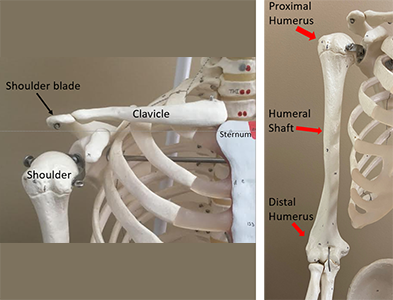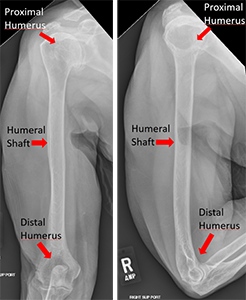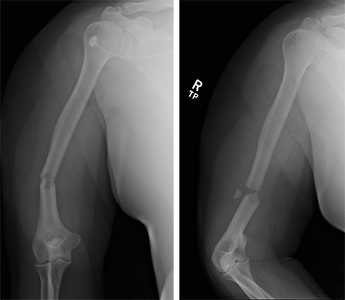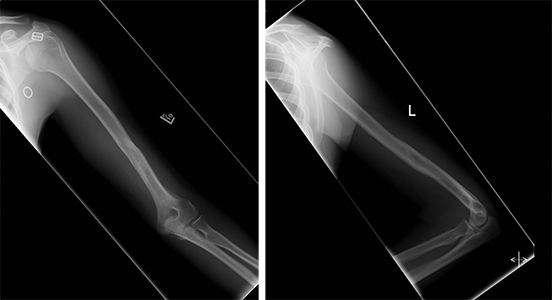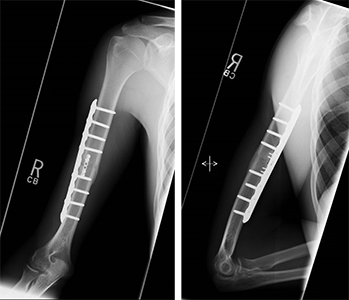Physical Therapy Videos - Humerus
What Is It?
The humerus is the only bone in your upper arm. It connects to the shoulder blade at the top and the forearm at the bottom. The middle part of the humerus is called the humeral shaft. A break in this part is known as a humeral shaft fracture. Muscles attached to the humerus help you move your shoulder and elbow.
How It Happens
Around five percent of all broken bones are humerus shaft fractures. It takes more force to break this bone than to break your wrist or collarbone. Falls can cause these breaks, and so can high-energy accidents like car crashes. The break can happen near the top, middle, or bottom of the bone. Treatment depends on the type and location of the break.
First Steps
A broken humerus is very painful and can make it hard to move your arm. A doctor will look at your arm and take x-rays to see the break. This can happen in an emergency room, urgent care, or a doctor's office. Sometimes, a main nerve in the arm can get hurt when the bone breaks. If this happens, you might have trouble moving your wrist, fingers, or thumb, and you could feel numbness on the back of your hand. After the break is found, a splint will be put on your arm until you can see a bone doctor. If your pain is under control and you don't have other injuries, you may not need to stay in the hospital.
Treatment
Many broken humerus bones can be treated without surgery. A bone doctor will give you a special brace(splint) to wear on your upper arm for one to three weeks after the injury. You'll wear the splint or a new brace all the time for at least six weeks, and maybe up to twelve weeks. As your bone heals, you'll wear the brace less and less. Physical therapy can help you regain strength and movement in your arm.
Sometimes, a bone doctor will decide to do surgery on your broken humerus. This might happen if the bone sticks out through your skin, or if you have other broken bones or injuries. During surgery, the doctor will make a cut on your arm and fix the broken bone with a metal plate and screws, or a rod inside the bone. After surgery, you won't need a brace and can use your arm for everyday activities right away, based on your doctor's advice.
Recovery
You can move your arm freely after surgery and use it to help other injuries heal, if you have any. Physical therapy is often used to help you get better motion and strength in your arm. Your arm might still hurt, but the pain should go down over a few weeks. You will see your doctor or their team a few times in the next months to check your healing progress.
Long Term
Broken humerus bones usually heal well, sometimes with and sometimes without surgery. Sometimes, a bone doesn't heal or heals in a bad position. In these cases, surgery may be needed. Talk to your doctor if your bone doesn't heal or if you have problems with your arm. If a nerve was hurt when you broke your humerus, it might get better on its own. Nerve healing can be slow, taking six to twelve months. If the nerve doesn't heal by itself, more tests or treatments might be needed.
Physical Therapy Videos - Humerus
---
Matthew Hogue, MD
Edited by the OTA Patient Education Committee and Steven Papp, MD (section lead)
All x-rays and pictures taken from the personal collections of Dr. Hogue and Christopher Domes, MD

